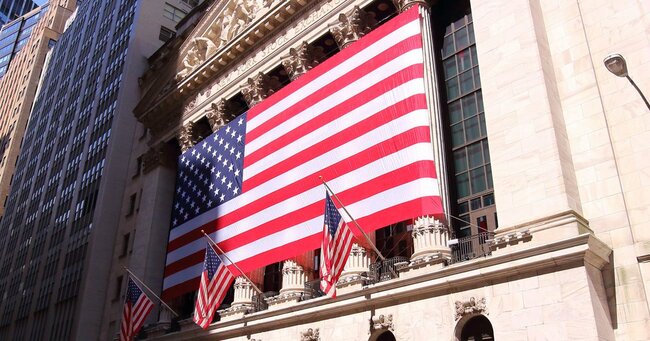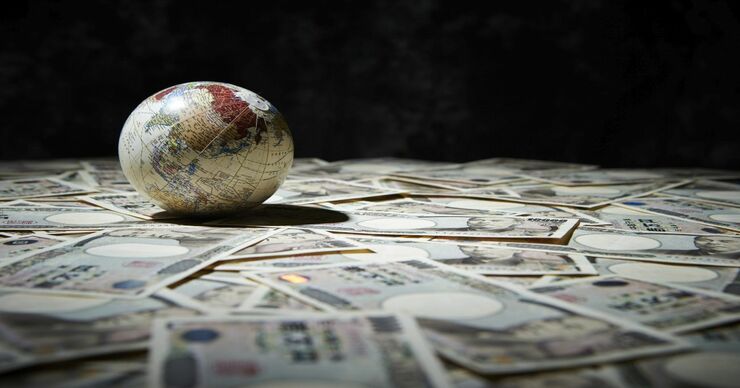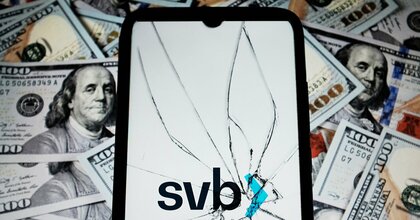Originally published in Japanese on May. 2, 2023
Hunt surprises
Despite 2023’s early gains, most forecasters remain dour based on headline fears—weak exports, global inflation, interest rate hikes, weak earnings and Ukraine. They should not be. Efficient markets pre-price widely known data, opinions and news—fast and continuously. That saps surprise power. So big surprises move markets most.
One shock could be an unusual form of the credit freeze. While loan growth simply limps along in Japan, it is gangbusters globally—a key force supporting surprisingly resilient economic activity. In America, January’s lending growth was 11.6% year-on-year, nearly triple the 4.3% of a year ago. Eurozone business lending slowed some but remained a solid 5.5% year-on-year. New lending drives economic growth.
The sneaky threat: Lending data are not inflation-adjusted. If loan growth slows below core inflation rates—which exclude volatile food and energy—and stays there, it will hurt growth, risking a far deeper, credit-driven recession that stocks have not weighed. That is not now. Even Japan’s sluggish 3.1% year-on-year loan growth tops January’s 1.9% core inflation rise. But it can happen. How? If banks’ fat, low-cost lending base—the same deposit glut I detailed in my Diamond Weekly 2023 forecast—deteriorate. That would spur bank funding competition, perhaps suddenly—and higher deposit rates, lower new loan profits, less incentive to lend, hence less lending.
Deposit rates are tiny now globally. You know interest paid on your savings accounts is nearly non-existent. But even U.S. savings rates average just 0.35%—and that is after the past year’s raft of hikes by the Federal Reserve. Still, some big global banks hint at higher deposit rates. U.S. financials are increasingly tapping overnight funding markets—indicating deposit bases may be eroding. Be watchful.
Scarier, watch global central banks—though not the BOJ rate hikes and loosened yield-curve control most fear. They would actually help. Why? Recall, banking’s core business is using short-term deposits to fund long-term loans. Rising long rates juice banks’ new loan profits—incentivizing more lending. Instead, beware of America’s Federal Reserve and others re-imposing the reserve requirements they scrapped in 2020. Upset their rate hikes are not killing lending, they might. Done wrongly, it can torpedo lending. This very thing drove 1937’s huge U.S. recession.
Seeds of conflict
Geopolitics also runs stealth risks—not the widely watched and priced ones like China’s Taiwan aggression or the Ukraine war. Instead, monitor India and Pakistan, old neighboring foes. Pakistan has started importing Russian oil, which can rile India by inflating the discounted Russian crude it has devoured since sanctions and boycotts began. This can grow hot and violent. Decades of Western policy blunders offer little diplomatic leverage to calm eruptions there. America, low on South Asian political capital, cannot militarily contain another hot theatre there. This can erupt badly, an ugly shock worth watching.
Crypto craziness fallout
Cryptocurrency arms another possible torpedo—but not the price implosion contagion many fear. Crypto is too small and disconnected from the real economy for that.
The real threat: devils in the details of upcoming crypto regulation, in flux in Japan and surely ahead in America and elsewhere after the FTX debacle. Japan is pushing for broad regulation through the Financial Stability Board. But well-intended regulations often spark unintended trouble.
Examples? America’s 2002 Sarbanes-Oxley and 2007’s mark-to-market accounting rules. One extended 2002’s global bear market. The other spurred $2 trillion of unnecessary bank write-downs, amplifying 2008’s U.S. subprime mortgage problems into a near-bottomless debacle. Well-intended regulations with disastrous intermediate-term outcomes are as old as capitalism. The risk now? Crypto regulations hit non-digital assets that are unintentional violators. Good intent, bad outcome.
The worst threat
But my biggest worry? Any big problem virtually no one—me included—foresees. A true stealth torpedo!
That said, do not obsess. Remember: Stocks rise far more often than fall. Using America’s S&P 500 for its longest history, 75% of rolling 12-month returns have been up since 1925. Japanese stocks have risen 65% of them since good data started in 1969.
To me, 2023 still looks great. But monitor potential negatives few watch—for shifts from unlikely possibilities to approaching torpedoes.
Ken Fisher is the Founder and Executive Chairman of Fisher Investments, a $200 billion global investment management firm spanning Asia, North America, Europe, Australasia, and the Middle East. He is the author of 11 books, including four New York Times Bestsellers, and writes customized columns in leading publications in 17 countries. He lives in Dallas, Texas. The views expressed here are his own.











